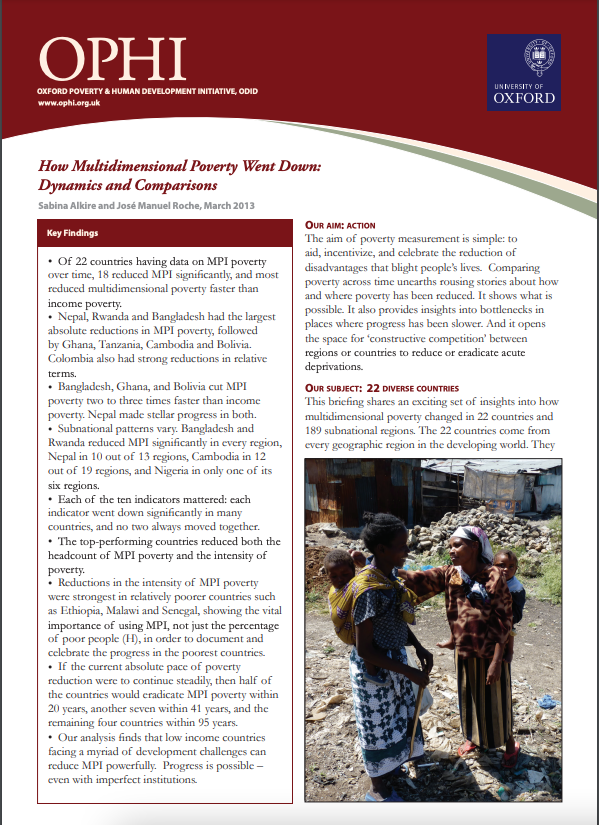How Multidimensional Poverty Went Down: Dynamics and Comparisons
OPHI Briefings
OPHI Briefing 16
This briefing shares an exciting set of insights into how multidimensional poverty changed in 22 countries and 189 subnational regions. The 22 countries come from every geographic region in the developing world. They contain nearly 2 billion people, which is almost 30% of the world’s population.
We created rigorously comparable MPI values. Naturally the global MPI is not tailor-made to any national context, so some governments are implementing national MPIs whose indicators, cutoffs and weights reflect their context and policy priorities as well as the voices and visions of the poor. But these comparisons of poverty reduction across 22 countries aid, incentivise, and celebrate the reduction of disadvantages that blight people’s lives. They also demonstrate the value-added that a multidimensional poverty measure such as the MPI can bring: to provide insights into progress by region, indicator, and weighted contributions; to incentivise reductions in intensity among the multiply disadvantaged; and to make visible the successes that income poverty overlooks.
Citation: Alkire, S. and Roche, J.M. (2013). 'How multidimensional poverty went down: Dynamics and comparisons', OPHI Briefing 16, Oxford Poverty and Human Development Initiative (OPHI), University of Oxford.
Keywords:
poverty measurement, Multidimensional Poverty Index, global MPI, poverty reduction
Region:
Europe and Central Asia
Arab States
Latin America and the Caribbean
Sub-Saharan Africa
East Asia and the Pacific
South Asia
Country:
Jordan
Colombia
Guyana
Peru
Plurinational State of Bolivia
Zimbabwe
Lesotho
Kenya
Cambodia
India
Ghana
Nepal
Bangladesh
United Republic of Tanzania
Nigeria
Malawi
Madagascar
Uganda
Senegal
Rwanda
Ethiopia



